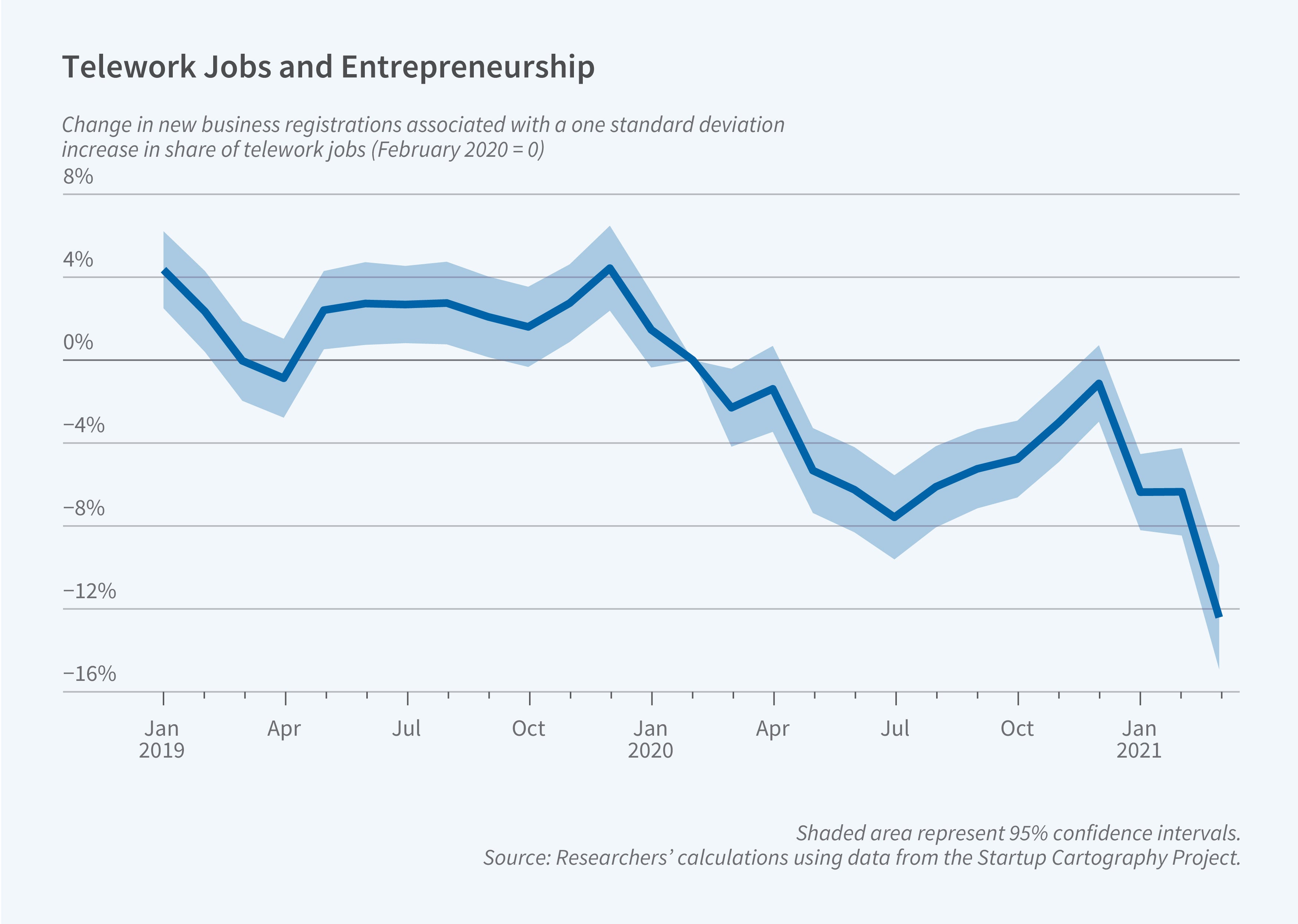Entrepreneurship as an Alternative to Flexibility at Work

The surge in remote work in recent years has transformed labor markets, with potentially important implications for the interaction between workplace flexibility and entrepreneurship. In Hustling from Home? Work from Home Flexibility and Entrepreneurial Entry (NBER Working Paper 33237), John M. Barrios, Yael Hochberg, and Hanyi (Livia) Yi explore whether the increased flexibility provided by work-from-home (WFH) arrangements has affected entrepreneurial decisions. They focus on the COVID-19 pandemic as a natural experiment and analyze how the sudden shift to remote work affected new business creation. Guided by a conceptual framework that highlights the substitution between employer-provided flexibility and entrepreneurship’s traditional appeal of autonomy, they find empirical evidence supporting this tradeoff.
When the pandemic turned remote work from potential to reality, it reshaped entrepreneurship: Regions with higher pre-pandemic telework potential saw significantly fewer new businesses launched, as workers no longer needed to start a business to gain flexibility—they already had it at their existing jobs.
The researchers analyze comprehensive business registration data from the Startup Cartography Project spanning 2011–21, along with ZIP code-level data on the prevalence of occupations amenable to telework. A baseline analysis of pre-pandemic data reveals that ZIP codes with higher shares of potentially teleworkable jobs experienced higher rates of new business formation. A 1 standard deviation increase in the teleworkable employment share was associated with approximately 16 percent more new business registrations. This positive correlation could have many sources: areas with greater telework potential may have more tech-savvy workforces, better technological infrastructure, or cultures more conducive to entrepreneurial experimentation.
When analyzing the period during the pandemic after stay-at-home mandates were implemented, however, the researchers find that regions with higher teleworking potential experienced comparatively lower growth in new business registration. During this period, a 1 standard deviation increase in the potential telework share translated into about 7 percent fewer new business registrations relative to the baseline. The researchers hypothesize that when traditional employment provides flexibility previously available mainly through entrepreneurship, the nonpecuniary benefits of starting a business diminish.
This effect was most pronounced in areas with lower economic opportunity. In regions with below-median average adjusted gross income and above-median unemployment, a 1 standard deviation increase in the teleworkable share was associated with an incremental 3.8 percent decrease in new business registrations. This may indicate that in areas where the financial benefits of entrepreneurship were already low, reducing the nonpecuniary benefits had a stronger dampening effect.
In the five states where founder gender could be identified, regions with higher telework potential showed a marked decrease in women-led entrepreneurship after the stay-at-home mandates. A 1 standard deviation increase in the teleworkable share was associated with between a 0.9 and 1.6 percentage point decrease in the share of businesses founded by women. This pattern likely reflects disproportionate household and caregiving responsibilities facing women who are potential entrepreneurs, which makes employer-provided flexibility particularly valuable to them.


